Charles E W Bean, Diaries, AWM38 3DRL 606/176/1 - October 1917 - Part 1
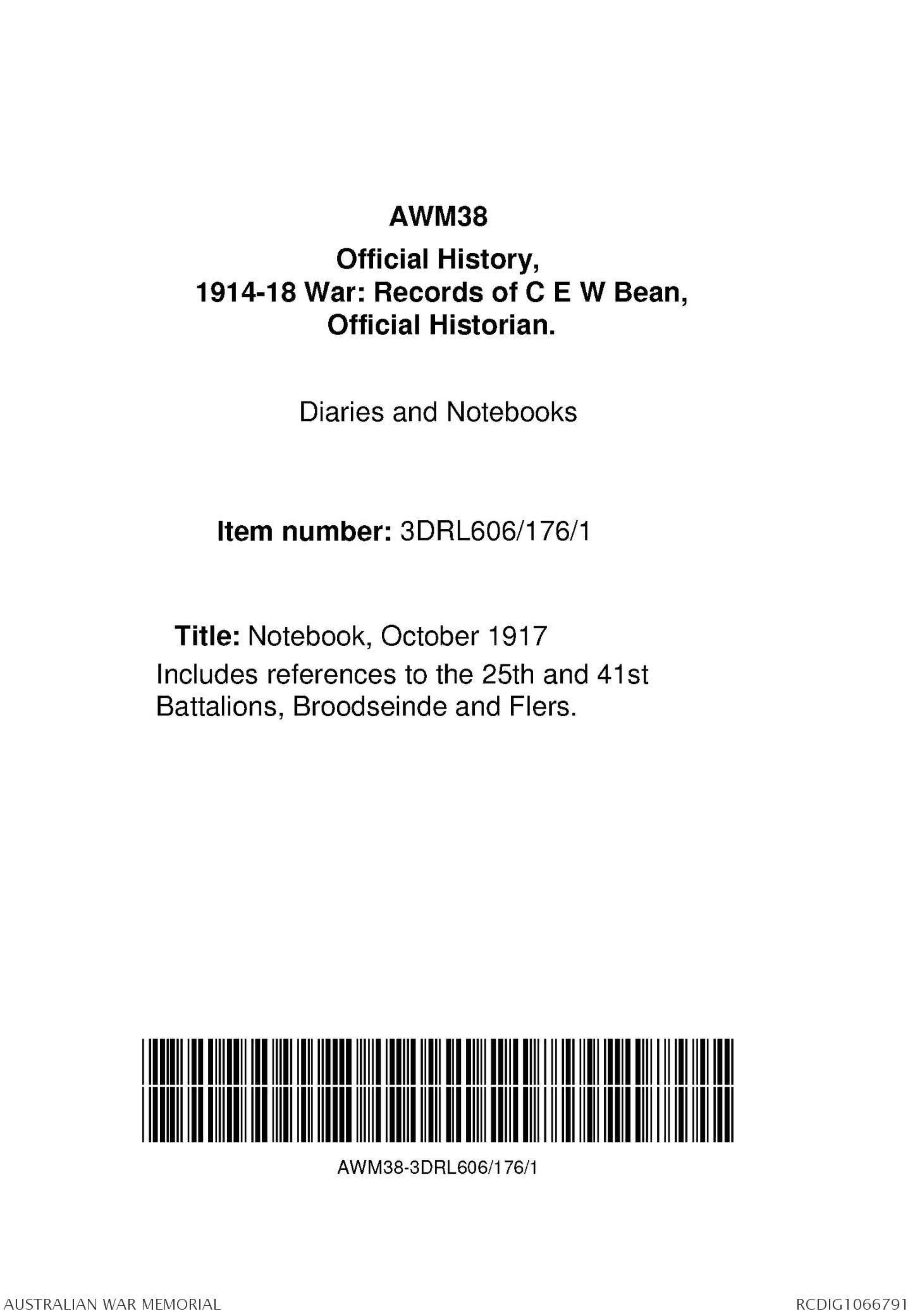
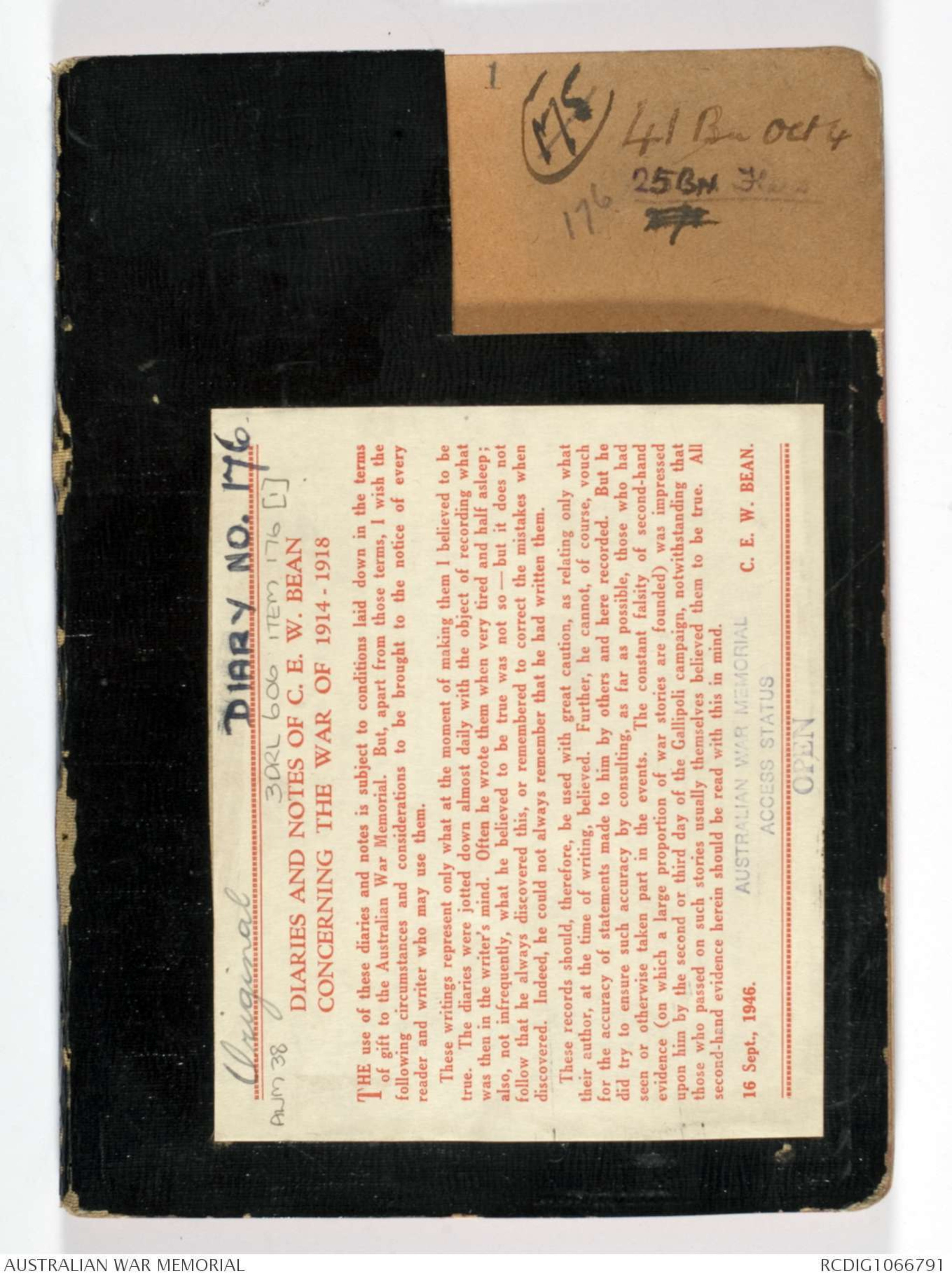
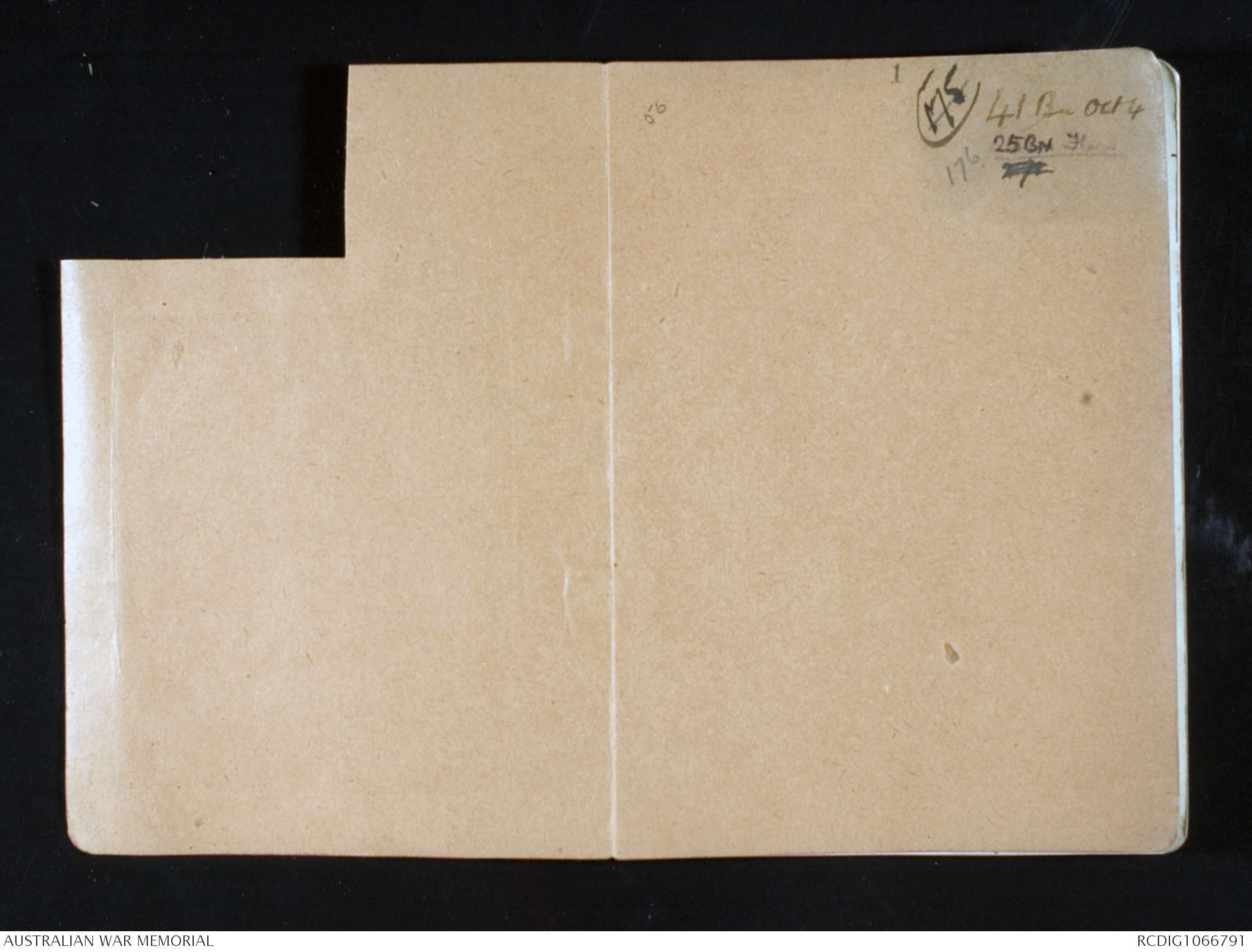
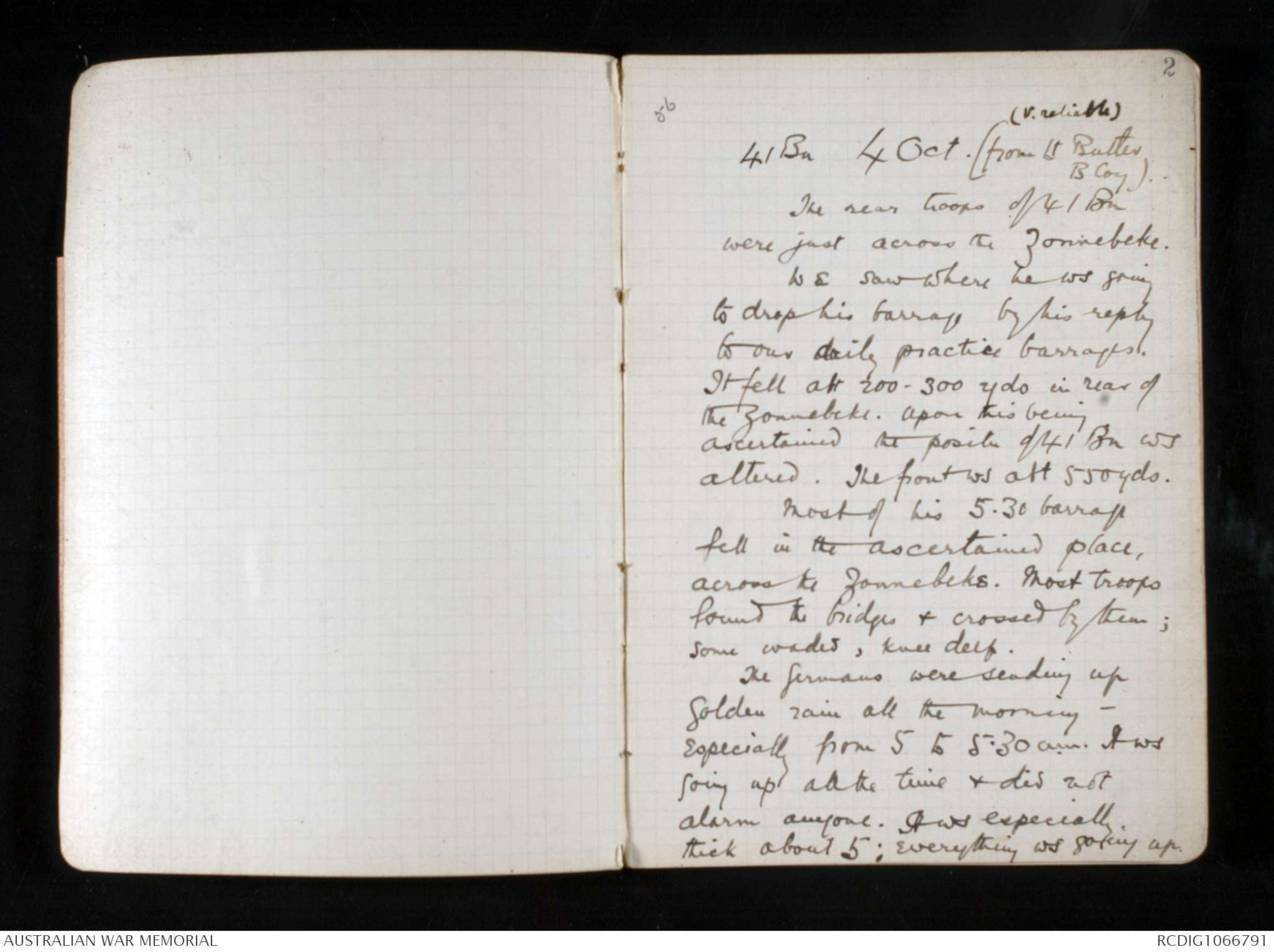
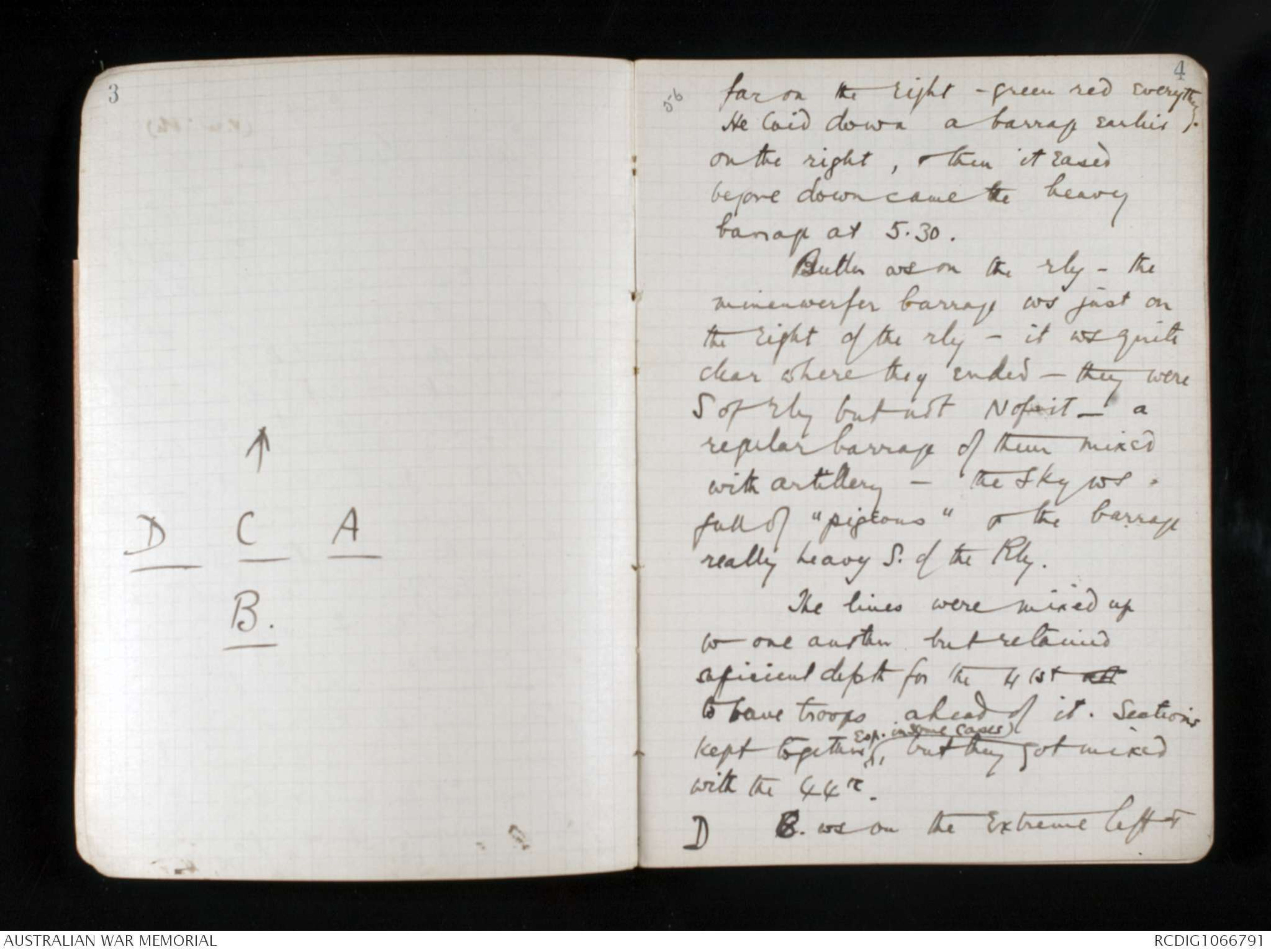
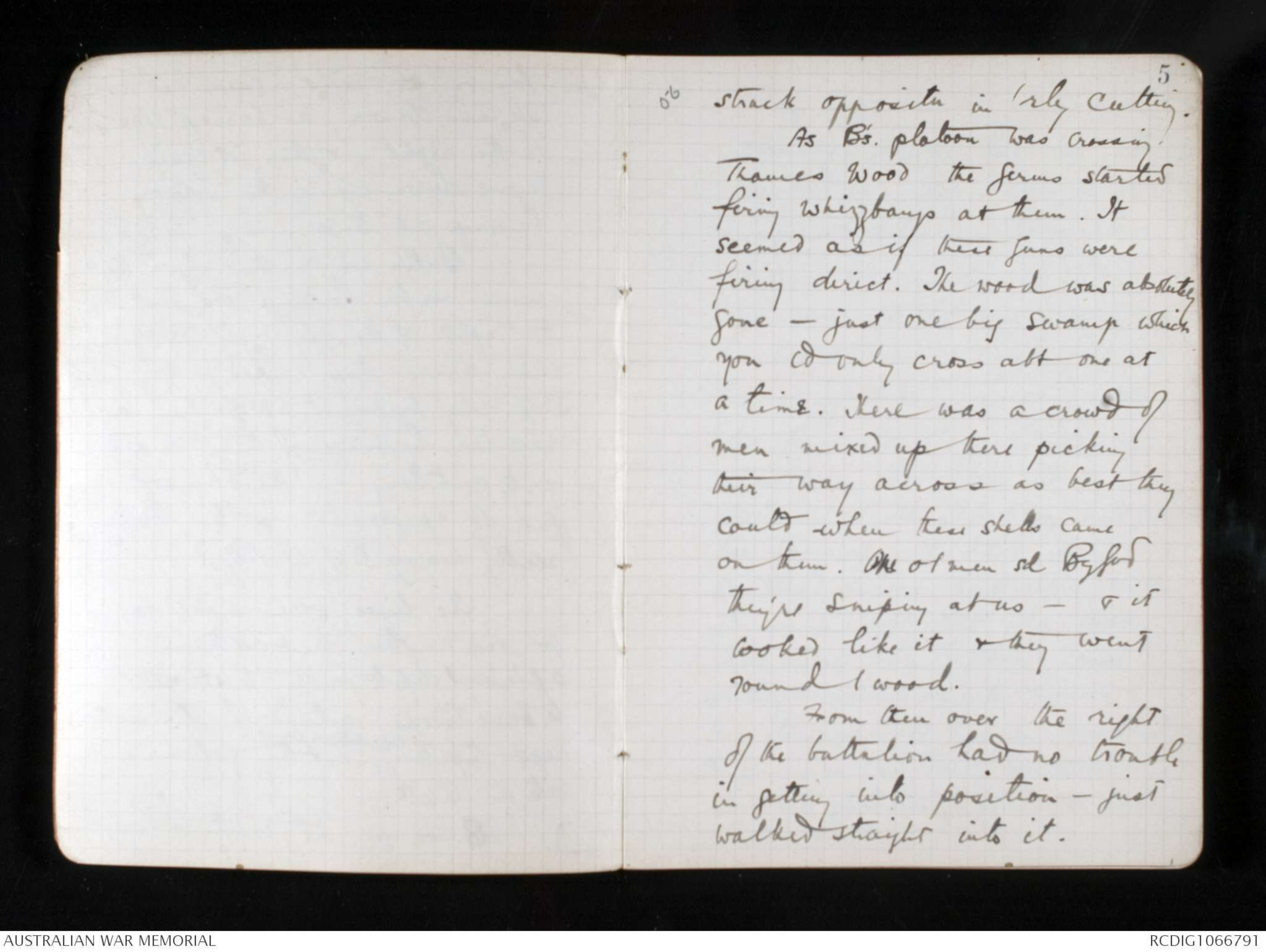
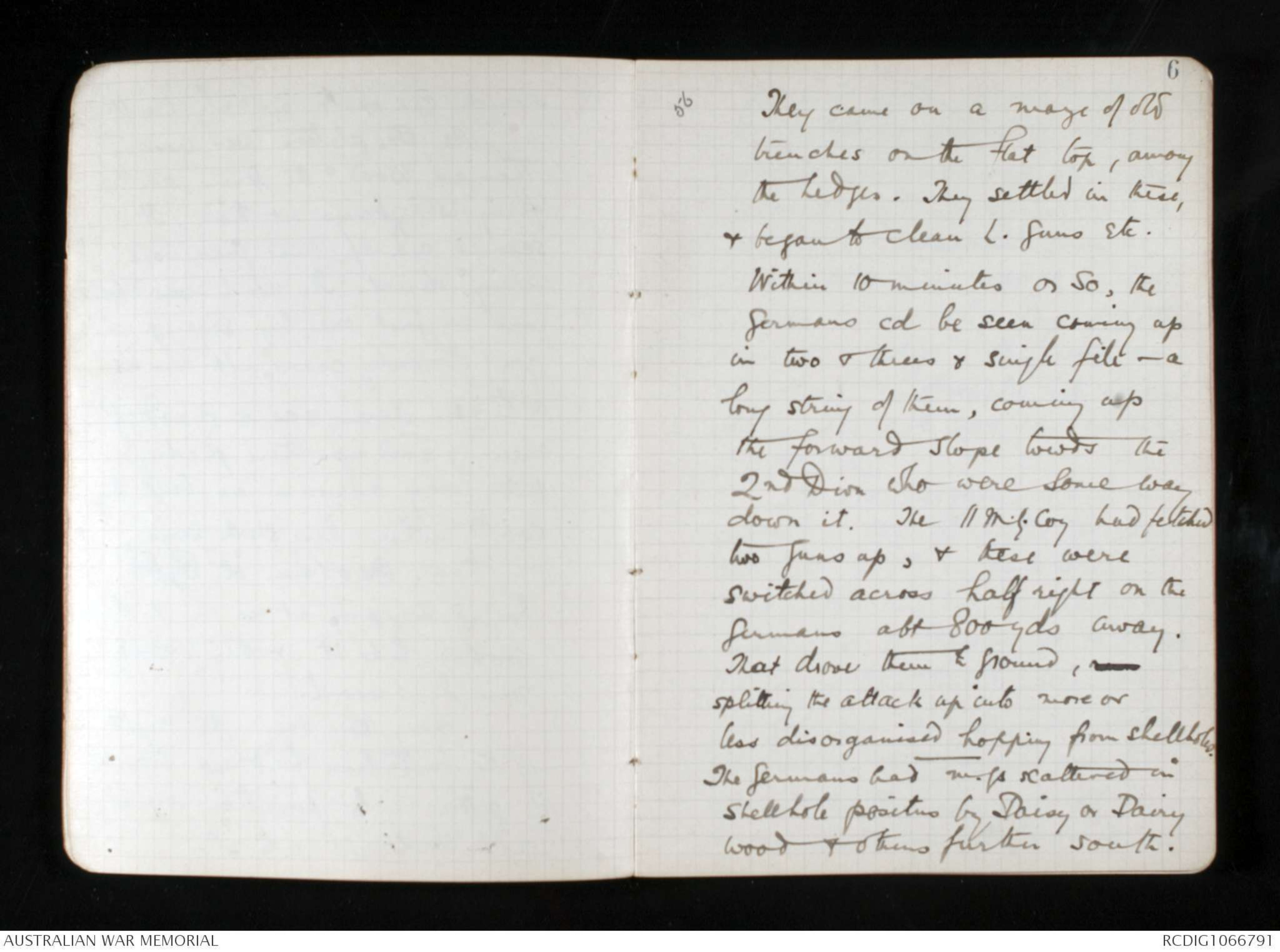
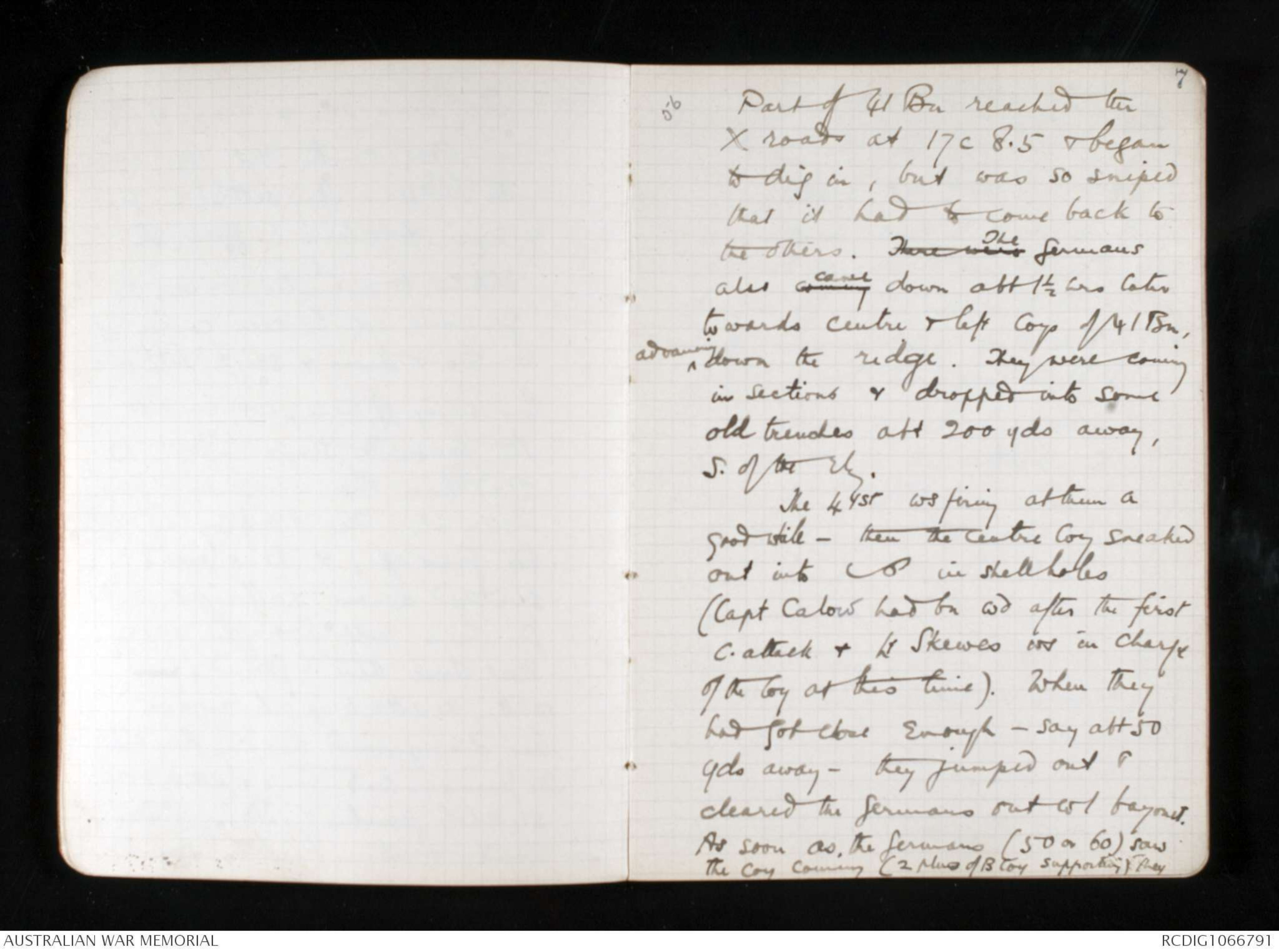
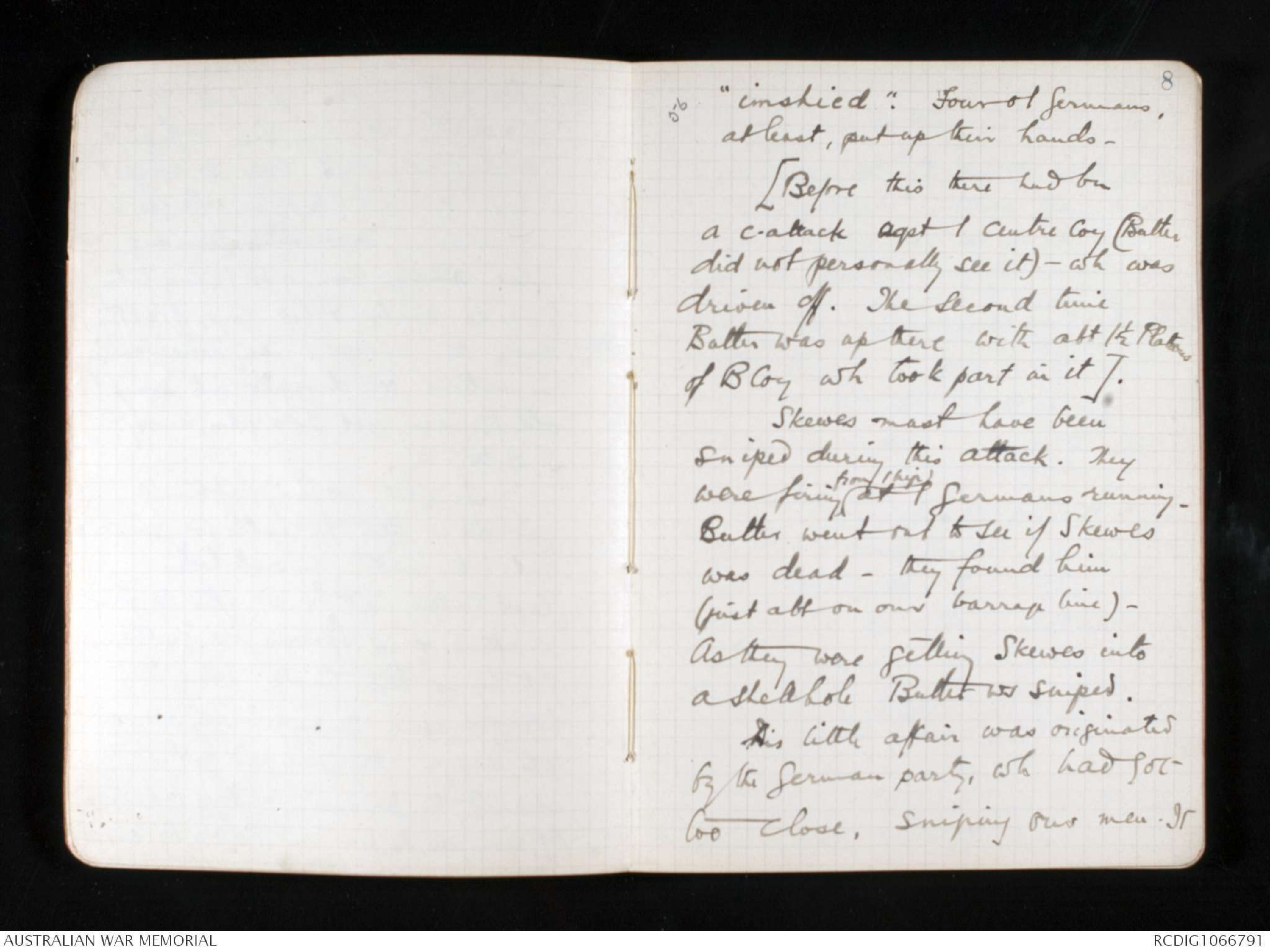
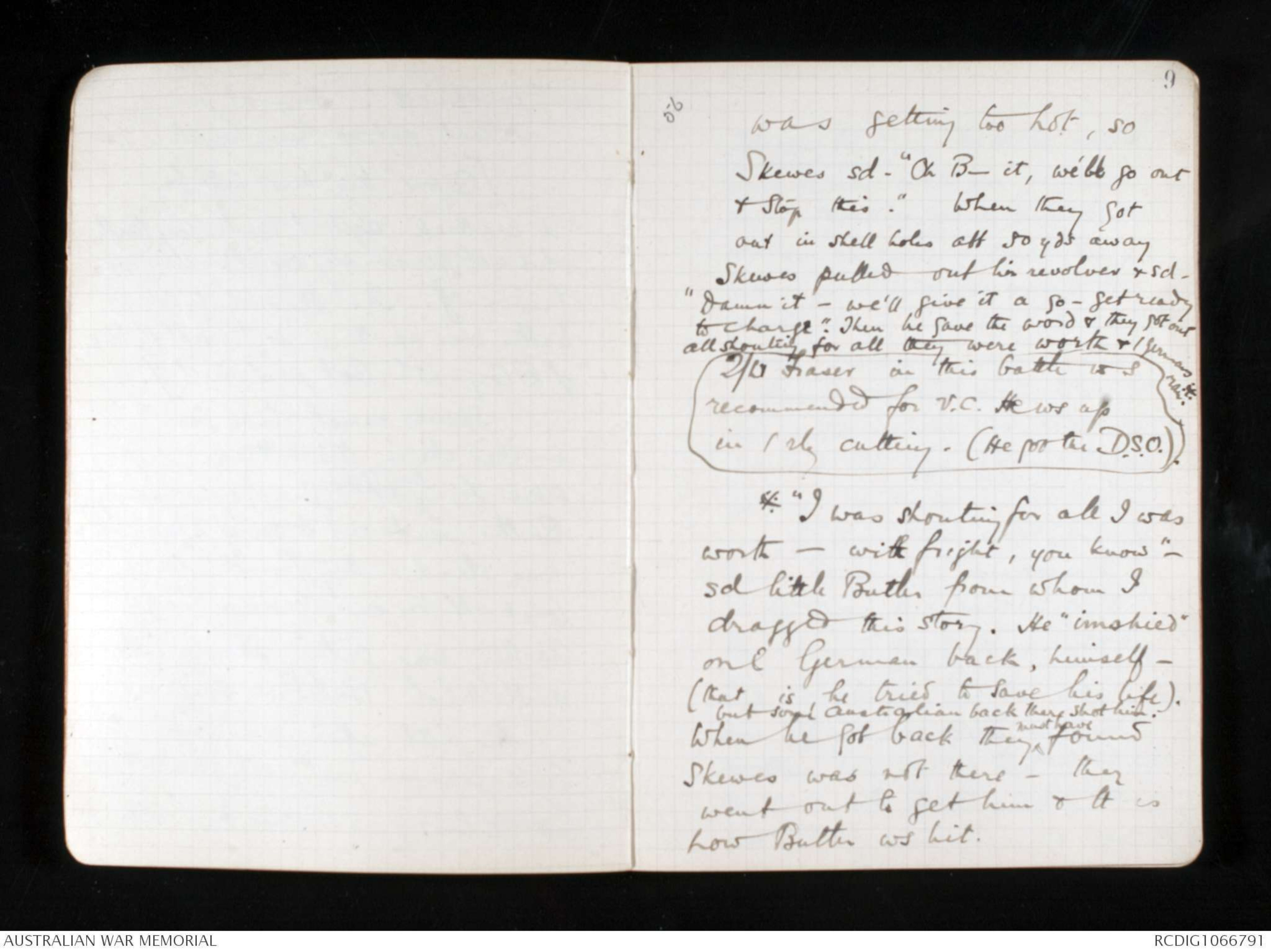
AWM38
Official History,
1914-18 War: Records of C E W Bean,
Official Historian.
Diaries and Notebooks
Item number: 3DRL606/176/1
Title: Notebook, October 1917
Includes references to the 25th and 41st
Battalions, Broodseinde and Flers.
AWM38-3DRL606/176/1
1175
41 Bn oct 4
25 Bn Flers
176 xxx
Original DIARY NO. 176.
AWM 38 3DRL 606 ITEM 176 [1]
DIARIES AND NOTES OF C. E. W. BEAN
CONCERNING THE WAR OF 1914 - 1918
THE use of these diaries and notes is subject to conditions laid down in the terms
of gift to the Australian War Memorial. But, apart from these terms, I wish the
following circumstances and considerations to be brought to the notice of every
reader and writer who may use them.
These writings represent only what at the moment of making them I believed to be
true. The diaries were jotted down almost daily with the object of recording what
was then in the writer's mind. Often he wrote them when very tired and half-asleep;
also, not infrequently what he believed to be true was not so - but it does not
follow that he always discovered this, or remembered to correct the mistakes when
discovered. Indeed, he could not always remember that he had written them.
These records should therefore, be used with great caution, as relating only what
their author, at the time of writing believed. Further, he cannot, of course vouch
for the accuracy of statements made to him by others and here recorded. But he
did try to ensure such accuracy by consulting, as far as possible, those who had
seen or otherwise taken part in the events. The constant falsity of second-hand
evidence (on which a large proportion of war stories are founded) was impressed
upon him by the second or third day of the Gallipoli campaign, notwithstanding that
those who passed on such stories usually themselves believed them to be true. All
second-hand evidence herein should be read with this in mind.
16 Sep., 1946 C. E. W. BEAN.
AUSTRALIAN WAR MEMORIAL
ACCESS STATUS
OPEN
56 1
1 175
41 Bn oct 4
25 Bn Flers
176 xxx
2
56
41 Bn 4 Oct. (v. reliable) (from Lt Butler
B Coy).
The rear troops of 41 Bn
were just across the Zonnebeke.
We saw where he ws going
to drop his barrage by his reply
to our daily practice barrages.
It fell abt 200-300 yds in rear of
the Zonnebeke. Upon this being
ascertained the positn of 41 Bn ws
altered. The front ws abt 550 yds.
Most of his 5.30 barrage
fell in the ascertained place,
across the Zonnebeke. Most troops
found the bridges & crossed by them;
some waded, knee deep.
The Germans were sending up
Golden rain all the morning –
especially from 5 to 5.30 a.m. It ws
going up all the time & did not
alarm anyone. It ws especially
thick about 5; everything ws going up.
3
Diagram. See original document
4
56
far on the right – green red everything.
He laid down a barrage earlier
on the right, & then it eased
before down came the heavy
barrage at 5.30.
Butler ws on the rly – the
minenwerfer barrage ws just on
the right of the rly – it ws quite
clear where they ended – they were
S of rly but not N of it – a
regular barrage of them mixed
with artillery – the sky ws
full of "pigeons" & the barrage
really heavy S. of the Rly.
The lines were mixed up
w one another but retained
sufficient depth for the 41st xx
to have troops ahead of it. Sections
kept together ^esp. in some cases but they got mixed
with the 44th.
D B. ws on the extreme left &
5
56
struck oppositn in / rly cutting.
As B's. platoon was crossing
Thames Wood the Germs started
firing whizzbangs at them. It
seemed as if these guns were
firing direct. The wood was absolutely
gone – just one big swamp which
you cd only cross abt one at
a time. There was a crowd of
men mixed up there picking
their way across as best they
could when these shells came
on them. One o / men sd By God
they're sniping at us – & it
looked like it & they went
round / wood.
From then over the right
of the battalion had no trouble
in getting into position – just
walked straight into it.
6
56
They came on a maze of old
trenches on the flat top, among
the hedges. They settled in these,
& began to clean L. Guns etc.
Within 10 minutes or so, the
Germans cd be seen coming up
in two & threes & single file – a
long string of them, coming up
the forward slope towds the
2nd Divn who were some way
down it. The 11 m.g. Coy had fetched
two guns up, & these were
switched across half right on the
Germans abt 800 yds away.
That drove them to ground, xxx
splitting the attack up into more or
less disorganised hopping from shellholes.
The Germans had m.gs scattered in
shellhole positns by Daisy or Dairy
Wood & others further south.
7
56
Part of 41 Bn reached the
X roads at 17c 8.5 & began
to dig in, but was so sniped
that it had to come back to
the others. There were The Germans
also coming came down abt 1½ hrs later
towards Centre & left Coys of 41 Bn,
advancing^down the ridge. They were coming
in Sections & dropped into some
old trenches abt 200 yds away,
S. of the rly.
The 41st ws firing at them a
good while – then the Centre Coy sneaked
out into [[shorthand]] in shellholes
(Capt Calow had bn wd after the first
c. attack & Lt Skewes ws in charge
of the Coy at this time). When they
had got close enough – say abt 50
yds away – they jumped out &
cleared the Germans out w / bayonet.
As soon as the Germans (50 or 60) saw
the Coy coming (2 plns of B Coy supporting) they
8
56
"imshied". Four of Germans,
at least, put up their hands -
[Before this there had bn
a c.attack agst / Centre Coy (Butler
did not personally see it) – wh was
driven off. The Second time
Butler was up there with abt 1½ Platoons
of B Coy wh took part in it].
Skewes must have been
sniped during this attack. They
were firing ^from / hip at / Germans running.
Butler went out to see if Skewes
was dead – they found him
(just abt on our barrage line) –
As they were getting Skewes into
a shellhole Butler ws sniped.
This little affair was originated
by the German party, wh had got
too close, sniping our men. It
9
56
was getting too hot, so
Skewes sd. "Oh B— it, we'll go out
& Stop this." When they got
out in shell holes abt 50 yds away
Skewes pulled out his revolver & sd -
"Damn it – we'll give it a go – get ready
to charge." Then he gave the word & they got out
all shouting for all they were worth & / Germans ran.※
2/Lt Fraser in this battle ws
recommended for V.C. He ws up
in / rly cutting. (He got the D.S.O.).
※ "I was shouting for all I was
worth – with fright, you know" –
sd little Butler from whom I
dragged this story. He "imshied"
one German back, himself –
(that is, he tried to save his life).
but some Australian back there shot him.
When he got back they ^must have found
Skewes was not there – they
went out to get him & tt is
how Butler ws hit.
 Deb Parkinson
Deb ParkinsonThis transcription item is now locked to you for editing. To release the lock either Save your changes or Cancel.
This lock will be automatically released after 60 minutes of inactivity.